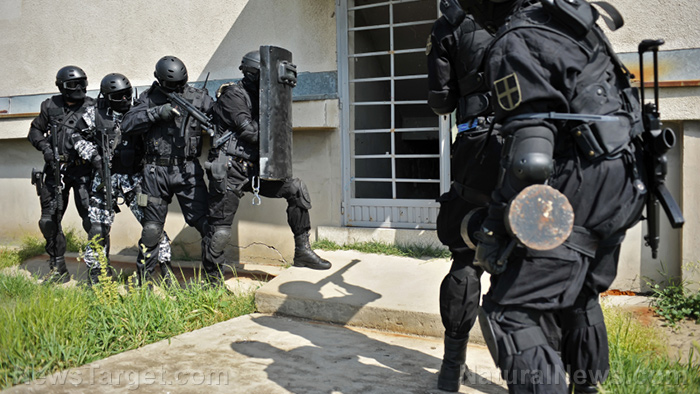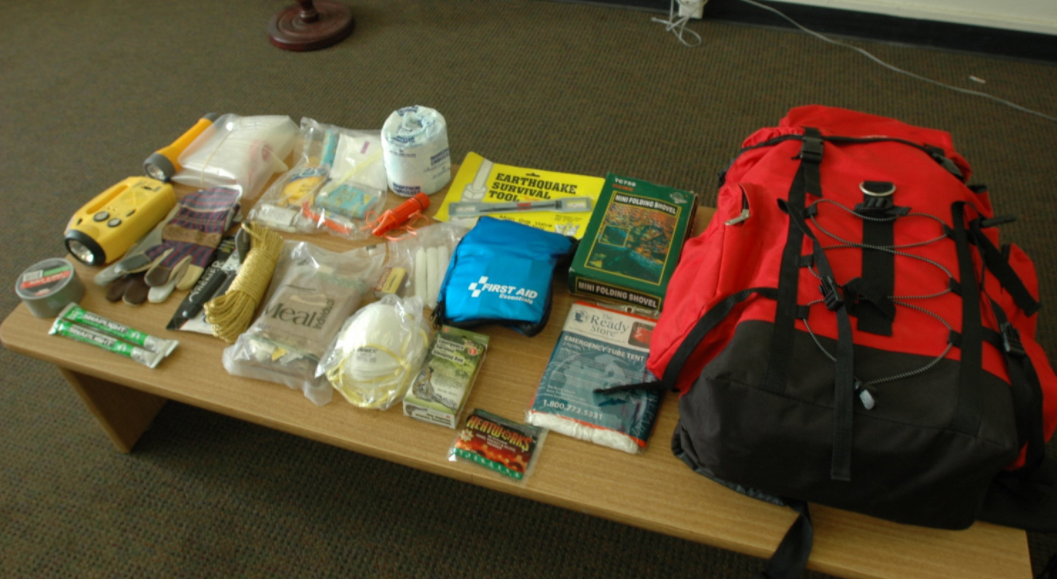A basic guide to surviving an EMP attack
03/03/2019 / By Jose Lopez

In the technology-dependent world we live in today, an EMP attack is one of the worst things that could happen. Surviving one requires a lot of preparation and planning. You need to understand first what an EMP is and what it can affect in our daily lives.
Understanding EMP
EMP stands for electromagnetic pulse, which is a short, intense burst of electromagnetic energy. Charged particles, usually electrons, accelerate rapidly and abruptly. This may occur during thunderstorms when lightning strikes the ground. A lightning strike produces an EMP that causes a sudden rise in electric current in nearby wires. This abrupt surge can literally burn out the wires, especially those tiny wires found in computers and electronic devices.
In contrast, the electric current flowing from huge generators of utility companies are steady and measured. Our electrical appliances and equipment have been tailored to receive this steady stream. Surge protectors, voltage regulators, AC outlets, modem jacks and grounding wires offer some protection against an EMP arising from a thunderstorm or a short-circuit along a power line nearby.
Types of EMP attacks
An EMP attack can be natural or man-made. A massive solar flare facing the Earth can send waves of charged particles streaming toward our planet, disrupting radio waves and destroying sensitive microcircuitry. On September 1, 1859, two eruptions on the sun’s surface were observed by astronomer Richard Carrington. The immense solar flare launched a large cloud of charged particles toward the Earth and within minutes, electrical telegraph systems went awry. Sparks flew from the equipment, operators received shocks and bits of paper were set alight. If the disruption was widespread enough for people at that time to call it the Carrington Event, imagine the disruption — or destruction — that could happen if another solar flare of similar magnitude were to occur again.
An explosion from a nuclear device also sends out a powerful EMP. The electric and magnetic fields suddenly created by the blast can produce a surge in current that damages electrical and electronic systems over a wide area. Someone wearing a heart pacemaker could die instantly. The 7,000 or so airplanes flying at any given time over America could crash into each other or onto the ground as the electronic equipment – within them or in ground stations – that guide their flight suddenly fail.
Preparing for an EMP
The first sensible step every homeowner should take is to shield his or her house from a localized EMP attack such as a lightning strike. Lightning rods divert the current surge away from the house and straight into the ground. Check that your surge protectors, voltage regulators, AC outlets, modem jacks and grounding wires are working well and are free from corrosion. Corrosion prevents electric current from flowing smoothly into the ground. Disconnect electrical and electronic equipment when not in use.
Moving on to protecting yourself from a bigger EMP attack, shield your electronic gear using a Faraday cage. Electric current will run around the cage and not into your electronic gear as long as the gear does not touch any part of the cage. Aluminum foil wrapped around the cardboard boxes that hold your electronics works as a Faraday cage. It works the same way for essential electronics you may have in your bug-out bag: Place the electronics inside plastic bags, then wrap them in aluminum foil.
For larger items, you will need larger metal containers. Galvanized trash cans are the most commonly available. They provide adequate protection for the gear you will store inside, and they are relatively inexpensive. Unused microwave or gas ovens can work, too. Burying your Faraday cage in the ground adds another layer of protection. For smaller devices, metal ammunition cans are very convenient due to their portability — great if you have to bug out.
For your vehicles and even larger items, a metal storage shed is best. If you don’t have one, you can line the inside of your garage with metal sheets.
Remember that electric power will be gone for hours or days after an EMP attack. It is best to have a solar-power or a wind-power generator – or both – with you. Your tools should be manually operated. You should have preserved food stockpiled, and you must know how to preserve food as well. You will need oil lamps with spare wicks and extra olive or coconut oil. You need adequate medical supplies for your first aid kit, but more importantly, you need the skills to use them properly.
Surviving an EMP attack boils down to preparing your house, equipment and skills for when SHTF.
Sources include:
Tagged Under: bug out, chaos, electricity, EMP, EMP attack, energy, Faraday cage, Gear, homesteading, nuclear attack, nuclear blast, off grid, power, preparedness, prepping, renewable energy, SHTF, solar energy, survival




















